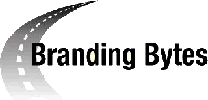
Issue 15, Summer 2009
Adjusting to the New Face of Need
Not since the Great Depression has our nation experienced such a wide distribution of need throughout all socio-economic levels.
It started out as a snowball at the top of the mountain with the subprime mortgage debacle. But as it continues to make its way down a steep slope, millions of Americans are getting swept up into what amounts to nothing less than an avalanche of personal destruction. Many, through no fault of their own, are losing their jobs, and as a result, are losing their homes, healthcare, life savings, sense of self-respect and more.
These are folks who once felt secure believing they were firmly ensconced in the middle-class. Many never before in their lives have had to ask for help from anyone.
But nonprofits are seeing changes in the demographics of those seeking their services.
Several of my community development organization (CDC) clients who focus on affordable housing and community revitalization issues are reporting that people who once drove up with their families in BMWs and Audis to volunteer for neighborhood clean-up days are now knocking on the doors of these very same nonprofits to seek assistance with mortgage workouts or foreclosure proceedings.
Nonprofit-run thrift stores are finding more "upscale" shoppers purchasing their used goods, and former thrift shop donors are now selling their used items on Ebay or at yard sales to earn extra cash.
A friend who volunteers at a soup kitchen says that not only are the numbers of those seeking a hot meal up, but more women and children are waiting in line to be fed.
From housing to food banks to health care the story is the same.
What does this mean for nonprofits accustomed to serving predominantly low-and moderate-income people? Quite a bit, actually.
Given this shift in demographic need, here are a few things to consider:
Change your messaging
If your mission statement and external messaging focus exclusively on serving low- and moderate income people, you may want to consider revisiting both. If you decide to expand your mission to include the new demographic of people in need your messaging needs to reflect this shift.
Aggressively promote your expanded mission
Reach into your community — including your civic organizations, PTAs, churches and local media-and aggressively promote the fact that your organization understands, and is ready to help anyone in the community in need of its services.
Sensitize your staff
People who have never had to ask for help before are often embarrassed or inhibited to do so.
Reinforce with your staff the need to make everyone they serve feel welcome and deserving of help. When parents are embarrassed to ask for assistance it's usually their children who suffer the most.
Don't abandon your original mission
Low- and moderate-income families need your support more than ever. Don't abandon them in their greatest time of need.
Expand your referral list
The human service needs in many communities are currently overwhelming. All the more reason to collaborate, cooperate and partner with other organizations and extend your referral list of service organizations.
Clearly understand what each of these organizations is capable of delivering in the way of services. At the same time, they should clearly understand your service capabilities and limitations.
If you can't help someone, do your best to refer them to an organization that might be able to meet their needs. But avoid sending them on a wild goose chase. These folks already are under enough stress.
Bend but don't break
Many nonprofits are already stretched thin. Despite the need to help more people, your primary goal is to remain solvent so you can continue to keep your doors open and your mission alive.
It may take a while, but eventually many of these people will get back on their feet. As a consultant who specializes in branding, I can assure you that by helping someone out of a jam during these critical times they will favorably remember you and your organization long into the future.
As always, I look forward to receiving your feedback, questions, success stories and branding challenges. Also, if you are in need of a motivational speaker, trainer, branding consultant/coach, or management consultant who can help you answer the questions: Who are we? What do we do? How do we do it? And should anyone care? I invite you to for more information.
In the meantime, good luck with your branding! — Larry
About Branding Bytes
Branding Bytes is a FREE quarterly e-newsletter courtesy of Larry Checco of Checco Communications. Please feel free to forward Branding Bytes on to others. However, Branding Bytes is copyrighted and may not be reprinted or reproduced without attributing Larry Checco of Checco Communications as its source and providing the following website address: www.checcocomm.net. Thank you.
Privacy Policy: WE DO NOT SELL, RENT, OR LEND THE E-MAIL ADDRESSES OF OUR SUBSCRIBERS!
To receive Branding Bytes email

